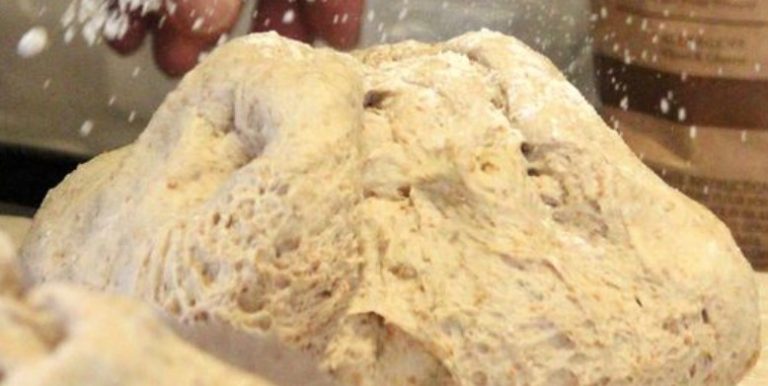Yeast is vegan despite the fact that yeast are many single-celled organisms. You can find out in our article what exactly yeast is and to what extent it can be combined with a vegan diet.
Bread, pizza and beer contain yeast. In the form of yeast extract, it is also found in some ready meals or in organic vegetable broth. Many of these foods are vegan, but not always: pizza, for example, is often not vegan. This is mostly due to the cheese and not the yeast. Because yeast is vegan, although microorganisms are actually behind it.
Yeast is vegan

Yeast is a unicellular microorganism that belongs to the sac fungi. Like other fungi, yeast does not have a central nervous system, so it cannot feel pain. Microorganisms also include bacteria and viruses. Yeast is therefore not assigned to the animal kingdom and is not a product from an animal food. Yeast is vegan.
To produce yeast, a yeast strain is propagated on a suitable medium, such as grain, sugar beet syrup or molasses. Sometimes yeast is also cultivated on whey, i.e. on a non-vegan nutrient medium. Nevertheless, the yeast cultures are vegan by definition. If you want to be absolutely sure that your yeast was also cultivated on vegan culture medium, you must contact the manufacturer in case of doubt. It does not have to be labeled how the yeasts are cultivated.
Yeast: organic quality is important
The Bavarian consumer advice center points out the differences between organic yeast and conventional yeast:
Organic yeasts are cultivated on natural raw materials such as grain, sugar beet syrup or molasses from certified organic farming. Sunflower oil is also added to prevent growth-inhibiting foam. It is therefore a completely natural food.
Conventional yeasts are often cultivated on molasses (a by-product of sugar production), inorganic nitrogen or phosphorus. Synthetic substances are used as defoaming agents, which then have to be rinsed out with plenty of water. Therefore, more water is used for the production of conventional yeast cultures than with organic yeast.
We therefore recommend that you buy organic yeast. This is better for health and the environment.
Use yeast: for baking and in medicine

There are many different types of yeast, but only a few are used in food production. The so-called baker’s yeast, also known as brewer’s yeast, is used most frequently.
In yeast dough, the yeast ensures that the dough rises and that the finished baked product is nice and airy at the end. The microorganisms feed on the sugar in the dough and convert it into alcohol and carbon dioxide. This fermentation process is also used to make beer, wine or vinegar.
In addition, yeast extract is obtained from yeast. Yeast extract is rich in the amino acid glutamic acid and is therefore used as a healthier alternative to glutamate to enhance the flavor of foods.
Yeast flakes can also be made by mixing yeast with flour and sea salt and then heat drying it. The spicy flakes are not only rich in healthy nutrients, but are also popular as a “cheese substitute” in vegan cuisine.
The yeast species Saccharomyces cerevisiae and Saccharomyces boulardii are also used medicinally. As probiotic medicinal substances, they are used for diarrhea and hair loss.



